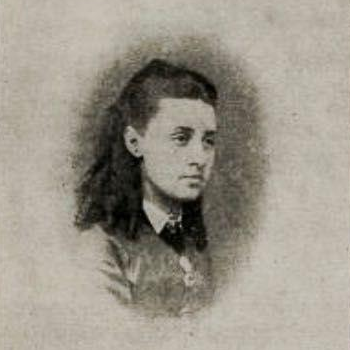I wrote last week about James Gilmour and his work in Mongolia. This week is about his courtship (or lack of it) before marriage. “His wife-to-be’s first glimpse of her intended husband (and his first glimpse of her) was as he stood on a boat coming out to meet her in Tianjin, China. She landed on Thursday and the following Tuesday, 8 December 1874, they were married.” They had never met until 6 days before they were married.
“James Gilmour’s courtship was as out-of-the-ordinary as everything else about him. Yet, like all that he did, it bore the stamp of complete consecration to God.”
Health warning: I do not recommend James Gilmour’s marriage methods to any lonely missionary – unless the Holy Spirit clearly leads that way!
James Gilmour had sailed for China in 1870, “a strong, manly young fellow of twenty-seven, (who) went without either a wife or a colleague.” He wrote before sailing that “companions I can scarcely hope to meet and the feeling of being alone comes over me.” James was so lonely that he admitted “I wonder if I am telling the truth when I say that I felt drawn towards suicide.” He subsequently wrote: “I take this opportunity of declaring strongly that on all occasions two missionaries should go together. I was not of this opinion a few weeks ago, but I had no idea how weak an individual I am. My eyes have filled with tears frequently these last few days in spite of myself.” “The young Gilmour, though so intensely in earnest, was merry and full of fun, and craved human companionship… the loneliness became well-nigh unbearable.”
His two great needs were for a wife and a colleague. He asked the mission directors in London to send him a colleague. They never succeeded. The wife he attempted to find for himself. To do this Gilmour turned to the Lord. ”I then put the finding of a wife into God’s hands, asking Him to look me out one, a good one, too.”
God did what he asked. In May, 1873, Gilmour began lodging with Mr. Meech, an old college friend who had recently come to Beijing with his wife. Mrs. Meech had a young sister, Emily. “Gilmour saw her picture, read extracts from her letters, and heard her praises sounded continuously. Could she be the bride God was going to give him?”
He asked Mrs. Meech if he might correspond with her sister. She gladly gave her consent. She and her husband had already learned to love and trust James. Early in January, 1874, he wrote to Miss Prankard. The very first letter contained a proposal of marriage! “When Emily Prankard received his letter in London, she at once took the matter to God. She had heard much about him from her sister in China and friends of his in the homeland. The spirit of missions was strong in her heart, and at length she wrote him that she would come to China and join him in his work for Mongolia.”
At the same time James wrote to his parents in Scotland, but his letter to his parents was delayed. “My parents were scared one day last year,” Gilmour wrote after his marriage, “by receiving a letter from a lady in England, a lady whose name even they had not known before, stating that her daughter had decided to become my wife! Didn’t it stir up the old people!” However, Emily spent two weeks with them in Scotland, and so completely won their hearts that they wrote to their son that “though he had searched the country for a couple of years he could not have made a better choice.”
“I proposed in January,” he says, “went up to Mongolia in the spring, rode about on my camels till July, and came down to Kalgan to find that I was an accepted man!” “My friends here drew long faces and howled at me for being rash. What if you don’t like each other? How then? It is for life! As if I didn’t know all this long ago!”
Their marriage proved one of the happiest on record. In the bride God gave him, Gilmour found not only a wife, but a colleague. “Hand in hand they worked for the Mongolians, her zeal fully equal to his. This refined English lady accompanied her husband on many a long, hard journey through Mongolia, not only to relieve his loneliness, but to do her share in winning the Mongols to Christ.”
James and Emily had three children: James (Jimmie), William (Willie), and Alexander (Alec or Alick) who died as a toddler. Sadly, all to soon, “in simple, childlike faith, on 19 September 1885, she died and the eleven years of happy married life were brought to an end.” James Gilmour died six years later in 1891.
James’ story of battling loneliness highlights an important struggle for cross-cultural workers. Check out some more reflections on that here.
Source: Belle Brain, The Love Stories of Great Christians & Wikipedia.



